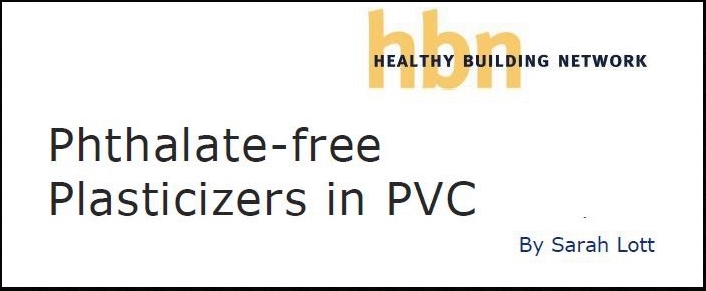The dominant movement in the marketplace is to alternative plasticizers to DEHP and other phthalates. Yet this is the less preferred solution to avoiding PVC and plasticizers altogether. Some recent assessments on alternative materials and plasticizers include:
-
 Clean Production Action’s Plastics Scorecard demonstrated the benefits of substituting medical IV bags made from PVC/DEHP with polyolefin bags that require no plasticizers (see figure to the right). The substitution eliminated the need for plasticizers, which are roughly 30% of the weight of an IV bag.
Clean Production Action’s Plastics Scorecard demonstrated the benefits of substituting medical IV bags made from PVC/DEHP with polyolefin bags that require no plasticizers (see figure to the right). The substitution eliminated the need for plasticizers, which are roughly 30% of the weight of an IV bag. - Alternative plasticizers need to be assessed for their hazards. While less preferable than avoiding PVC and plasticizers altogether, if a company can’t avoid PVC, here are two analyses of alternative plasticizers. The Healthy Building Network (HBN) and Green Chemistry and Commerce Council (GC3) used the GreenScreen (GS) to evaluate alternatives to phthalates in building products (HBN) and DEHP in wire and cable (GC3). Here are their findings:
- Two bio-based products that appear to be the least toxic of all the plasticizers it evaluated (Grindsted Soft-n-Safe and Polysorb ID 37) – GS Benchmark (BM) undetermined due to data gaps (HBN)
- DEHT – GS BM 3 (with data gaps) (GC3 & HBN)
- Vegetable oil based blends that vary from GS BM 2 to GS BM 3 (GC3 & HBN)
- DINCH – GS BM 2 (GC3 & HBN)
- Dibenzoate plasticizer – potentially GS BM 1 (while safer than DINP still has significant hazardous properties) (HBN); and
- Polymeric adipate – GS Benchmark 2, 3, or 4 (depending on chemical assessed) (GC3).

- Further alternative assessments of phthalates: The U.S. EPA Design for Environment program is in the middle of a project to evaluate alternatives to eight phthalates.


